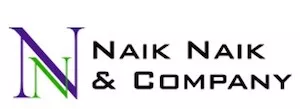Decentralized Autonomous Organizations (DAOs) are a novel intersection of technology, governance, and finance, fundamentally changing how organizations can be structured and operated. At the heart of DAOs lies blockchain technology, which enables the creation of a transparent system. However, the legal status and implications of DAOs remain complex and evolving, raising significant questions about liability, regulation, and enforcement.
Definition & Structure of DAOs
Most of the DAOs that exist today run on the second biggest blockchain, the Ethereum network. Ethereum describes a DAO as "an internet-native business that's collectively owned and managed by its members. They have built-in treasuries that no one has the authority to access without the approval of the group. Decisions are governed by proposals and voting." Simply put, one can describe a DAO as an internet community with a shared treasury. Individuals can come together and contribute or invest in a DAO in exchange of governance tokens. These tokens are used by the DAO members to vote on aspects that could be pre-decided collectively by the DAO members or for the objective for which the DAO has been formed. Just for the sake of comparison and better understanding, one may understand a DAO to have a corporate structure and the governance tokens to be shares. However, one must note that governance tokens can be compared to shares only for the voting aspect vested in them. Unlike shares, governance tokens in no way provide for "ownership" over the DAO.
The structure of a DAO can be broken down into several key components:
1. Smart Contracts: These form the backbone of a DAO, automating processes and ensuring that rules are enforced without the need for human intervention.
2. Governance Tokens: These tokens are distributed to members and are used to vote on proposals, allocate resources, and make decisions.
3. Proposals and Voting: Members submit proposals for changes or initiatives, which are then voted on by the token holders.
4. Treasury Management: DAOs often have a treasury, managed collectively, to fund projects and operations.
There are infinite purposes for which a DAO could be formed. For instance, an internet collective called Constitution DAO crowdfunded close to $47 million in Ether, a popular cryptocurrency, through a campaign carried out over social media in order to bid for a rare copy of the US Constitution.
Legal Challenges and Considerations
The rise of DAOs presents several legal challenges, primarily due to their decentralized and borderless nature. Key legal considerations include:
1. Legal Personality: One of the most significant challenges is whether DAOs can be recognized as legal entities. Traditional corporations and organizations are granted legal personality, allowing them to enter into contracts, own property, and be sued. DAOs, lacking a centralized structure, do not easily fit into existing legal frameworks. Some jurisdictions are beginning to recognize DAOs as legal entities. For example, in 2021, Wyoming became the first state in the U.S. to pass legislation allowing DAOs to be registered as limited liability companies (LLCs). This provides a legal foundation for DAOs, granting them certain legal rights and responsibilities.
2. Liability: Determining liability in a DAO is complex. In traditional organizations, liability can be assigned to individuals or the entity itself. However, in a DAO, decision-making is distributed, and it can be difficult to pinpoint responsibility. This raises questions about who is liable in case of a breach of contract, fraud, or other legal issues.
3. Jurisdiction: DAOs operate globally, often with members from multiple jurisdictions. This raises questions about which country's laws apply to a DAO and its activities. Jurisdictional issues can complicate legal disputes, regulatory compliance, and enforcement actions.
4. Regulatory Compliance: DAOs must navigate a complex landscape of regulations, including securities laws, anti-money laundering (AML) regulations, and data privacy laws. Compliance is challenging due to the decentralized and pseudonymous nature of DAOs, which can make it difficult to identify and verify participants.
Case Studies and Examples
Several prominent DAOs illustrate the diverse applications and legal challenges of this emerging organizational model:
1. The DAO (2016): One of the earliest and most well-known DAOs, The DAO raised $150 million through a token sale. However, a vulnerability in its smart contract code was exploited, leading to a $50 million loss. This incident highlighted the importance of security and governance in DAOs and led to increased regulatory scrutiny.
2. MakerDAO: MakerDAO operates a decentralized stablecoin system on the Ethereum blockchain. It demonstrates how DAOs can manage complex financial systems autonomously, though it also faces regulatory challenges related to financial compliance and security.
3. Aragon: Aragon is a platform that allows users to create and manage DAOs. It provides tools for governance, fundraising, and organizational management, showcasing the potential for DAOs to facilitate decentralized project development and collaboration.
Conclusion
DAOs represent a transformative shift in how organizations can be structured and operated, leveraging blockchain technology to create decentralized, transparent, and autonomous systems. However, the legal landscape for DAOs remains in flux, with significant challenges related to legal recognition, liability, jurisdiction, and regulatory compliance. Developing appropriate legal frameworks and best practices will be crucial to unlocking the full potential of DAOs while mitigating risks and ensuring compliance with existing laws.
As the technology and understanding of DAOs continue to evolve, so too will the legal approaches to managing and regulating these innovative entities. The ongoing dialogue between regulators, legal experts, and the DAO community will be essential in shaping a legal environment that fosters innovation while protecting participants and upholding the rule of law.
The content of this article is intended to provide a general guide to the subject matter. Specialist advice should be sought about your specific circumstances.


